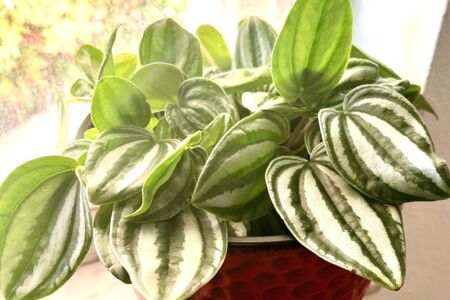Monstera Deliosa in 3 Gallon Pot
Monstera deliciosa, commonly known as the Swiss cheese plant, is a stunning tropical vine native to the rainforests of Central and South America. Renowned for its large, glossy leaves with unique fenestrations, this plant has become an icon of tropical decor worldwide.
Its leaves are its most distinctive feature, often reaching sizes of up to 2 feet (60 centimeters) in length. These leaves are heart-shaped when young and develop dramatic splits and holes as they mature, resembling Swiss cheese, hence the nickname. The fenestrations serve to increase the leaf's surface area, aiding in light capture and water shedding in its natural habitat.
Monstera deliciosa is an evergreen perennial that can grow both as a vine, climbing trees with its aerial roots, or as a self-supporting shrub on the forest floor. Indoors, it's commonly grown in containers with support provided by stakes or trellises. When given room to grow, it can reach impressive heights, making it a striking focal point in any room.
Caring for Monstera deliciosa is relatively straightforward. It thrives in bright, indirect light but can tolerate lower light conditions. However, too much direct sunlight can scorch its leaves. Water moderately, allowing the top inch (2.5 centimeters) of soil to dry out between waterings. Regular misting helps maintain humidity, especially in drier indoor environments.
Fertilize Monstera deliciosa monthly during the growing season (spring to fall) with a balanced liquid fertilizer diluted to half strength. Pruning is minimal, mainly to remove dead or damaged leaves. Occasionally, aerial roots may be trimmed if they become unruly.
While generally low-maintenance, Monstera deliciosa is susceptible to pests such as spider mites, scale insects, and mealybugs. Inspect regularly and treat infestations promptly with insecticidal soap or neem oil.
Propagation is straightforward and can be done via stem cuttings or air layering. Given its vigorous growth habit, repotting may be necessary every 1-2 years to provide ample space for root growth.
Monstera deliciosa is not only appreciated for its ornamental value but also for its fruit, which gives rise to its species name "deliciosa." The fruit is edible when ripe, resembling a green, segmented ear of corn with a pineapple-like flavor.
Overall, Monstera deliciosa is a versatile and visually striking plant, perfect for adding a touch of tropical elegance to indoor spaces with its lush foliage and unique growth habit.
Care Plan for Monstera deliciosa (Swiss Cheese Plant):
- Light: Provide bright, indirect sunlight. Can tolerate lower light conditions, but avoid direct sunlight as it can scorch leaves.
- Temperature: Keep temperatures between 65°F to 85°F (18°C to 29°C). Avoid sudden temperature fluctuations and cold drafts.
- Humidity: Maintain moderate to high humidity levels, ideally between 60% to 80%. Regular misting or use of a humidity tray can help.
- Watering: Water when the top inch (2.5 cm) of soil feels dry, typically every 1-2 weeks. Ensure adequate drainage to prevent waterlogging.
- Soil: Plant in well-draining potting mix rich in organic matter. A mix of peat moss, perlite, and compost works well.
- Fertilization: Feed monthly during the growing season (spring to fall) with a balanced liquid fertilizer diluted to half strength. Avoid fertilizing in winter.
- Pruning: Trim dead or damaged leaves as needed. Remove any yellowing or brown foliage. Prune aerial roots if they become unruly.
- Support: Provide support for climbing vines with stakes, trellises, or moss poles. Train vines to grow along supports for aesthetic appeal.
- Pests and Diseases: Regularly inspect for pests like spider mites, scale insects, and mealybugs. Treat infestations promptly with insecticidal soap or neem oil.
- Repotting: Repot every 1-2 years or when roots outgrow the pot. Choose a container one size larger with adequate drainage holes.
- Propagation: Propagate via stem cuttings or air layering. Cuttings can be rooted in water or directly in soil.
- Harvesting: If desired, harvest ripe fruit for consumption. Fruit resembles a green, segmented ear of corn with a pineapple-like flavor.
- Toxicity: Keep out of reach of pets and children, as all parts of the plant are toxic if ingested.
By following this care plan, you can ensure your Monstera deliciosa remains healthy and vibrant, showcasing its iconic foliage year-round.




